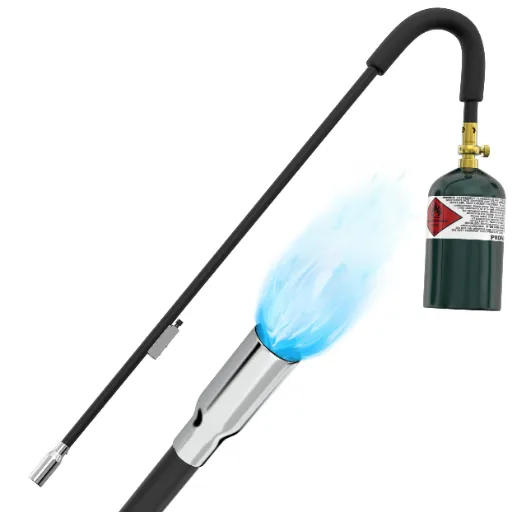The food production industry is gradually improving with the introduction of custom industrial food processing equipment and machines such as industrial blenders, fryers, etc. This type of machinery is built for specific tasks which can help to increase overall efficiency, productivity, and quality of products. In this article, we will consider different new technologies that have an impact on modern food processing machinery designs, how the application of unique manufacturing machines can meet the specific needs of the business, and how these changes are affecting both the supply chain and consumers. This context is required to grasp the scope of this transformation and for a better understanding of how industry tools can be utilized to respond proactively to market changes.
What is Custom Industrial Food Processing Equipment?

Custom-made industrial food processing equipment means machines and tools which are designed and built to meet specific operational needs within the food processing sector. These are not the standard equipment, these are the custom-made solutions devised to enhance processes, and work efficiency and resolve specific issues confronting an organization within its environment. This customized approach helps organizations do various types of food including their required volume and many other specific requirements to achieve maximum efficiency and requirements set. Customized equipment allows these companies to be flexible and competitive in the fast-changing environment by allowing them to adjust their operations to the new technologies and to the demands of consumers.
Understanding Food Processing Equipment
In the course of my investigations, I discovered that nearly all of the food processing equipment is crucial in mechanizing and making food production processes more efficient. Everything depends on a range of equipment, from sorting and grading to packaging and cooking, which replaces the efficiency of manual labor with more effective machines with specific functions. Most modern improvements noticeably employ such technologies as AI and the Internet of Things (IoT) which aid in monitoring as well as quality control at all stages in the production line. These new trends facilitate not only productivity but also food safety and uniform quality. Furthermore, the easy availability of tailored-made equipment enhances the speed at which the manufacturers can respond to consumer’s preferences and demands, thus meeting competition in the market. To this end, such solutions help companies in the enhancement of business processes and regulatory compliance.
Importance of Custom Solutions in the Industry
According to what I know, it’s clear that tailored solutions are of great importance within the sector as they help firms to satisfy certain operational requirements while also retaining their competitiveness. Such equipment is often custom-designed to meet specific requirements for production such as dealing with particular food items or expected production levels, while adhering to the most recent industry, norms. The flexibility of these types of solutions allows firms to implement new technologies like automation and real-time monitoring of data which are very important for enhancing productivity, minimizing wastage, and increasing the quality of the finished product. With the custom solutions in place, firms are able to invest in new equipment and consequently modify their processes to reflect the changes in customers and market dynamics.
Key Players in the Manufacture of Custom Equipment
When looking into the main players in the custom equipment manufacturing business, For whatever reason GEA Group is well known to come up with ideas, and a wide variety of products, operating in areas such as dairy processing and brewing technologies. Similarly, Bühler Group has more focus on their plant equipment manufacturing, as well as better emphasis on the environment and more efficient digitalization. In addition, JBT Corporation focuses on providing sophisticated food technology solutions, including fruit and vegetable processing methods to their customers while ensuring sterile and safe food.
In their discussions, these various companies go on to mention the technical features saying they emphasize such aspects as effectiveness, the ability to scale the equipment, and the ability to meet the safety requirements where they are applicable. The equipment is intended to perform several tasks at optimal production rates but with maximum energy conservation and low pollution. Monitoring automation, precision controls, and real-time control systems are often included because they are very important in upholding quality and regulations. Why these technical parameters exist is more than reasonable; they are crucial in making certain competitive advantages and meeting current manufacturing requirements.
How Does Custom Design Enhance Food Processing?

Custom design in food processing equipment enables the manufacturer to use tools that are more suited to particular types of operations and products. This essentially helps to improve efficiency and effectiveness. Also, by working with equipment manufacturers to develop “one-off” solutions, companies are able to solve specific processing problems and efficiency bottlenecks. The custom-made equipment usually possesses other high-tech functionalities such as advanced controls and automation, and even environmentally-friendly features. This results in high consistency of product, lower wastage, and better achievements of health and safety measures. Also, custom solutions can be integrated into already available ones easily, hence scaling and adjustment to the market can take place without major restructuring. In total, the custom design of food processing machines is an essential factor for competitiveness and cutting-edge advancements in the food processing industry.
Designing for Efficiency and Productivity
In order to improve food processing efficiency and productivity, I seek to exploit the knowledge that is availed by the dominant players in the industry. The stress the importance of custom-made equipment in accomplishing the business objective. I understand that the integration of equipment manufacturers allows defining innovations to specific processing problems, enhances product quality, and meets the requirements of regulators. Introducing controls and automation features into the equipment is stated as an effective means of increasing production and reducing waste. In addition, industry experts implies in their opinion that the application of energy-efficient technologies is paramount in reducing environmental impact and improving cost efficiencies. Generally, the application of these best practices guarantees that I remain competitive and my operations are responsive to the ever-changing needs of the market.
The Role of Engineers in Creating Custom Solutions
Being an engineer who specializes in designing bespoke solutions for the food processing sector, Thus, I know the function that I bear is crucial in the process of developing equipment design that is tailored to the given customer’s requirements and that can be fitted into their present processes with no hitches. I am able to pursue this objective by working together with customers and assessing the current progress in the industry so that I utilize the most recent technologies in my designs thereby improving efficiency, quality, and sustainability. The lessons also focus on the challenge of embracing transformation that is brought by new technologies and changing regulations while ensuring that the industry remains competitive and timely in responding to the needs of the market.
Utilizing Technology for Advanced Designs
In using advanced technology for sophisticated designs, usually reiterate the importance of simulation software in the design of equipment in such a way that the designed equipment will operate in difficult working conditions. In this case, I concentrate on some technical parameters like heat transfer parameters, material strength, and power consumption. The same applies to the introduction of IoT and AI technologies in terms of predictive maintenance and increasing the system’s response time. By embedding these technical details during design considerations, I can be sure that the proposals will be strong, economical, and flexible enough for future changes in the industries.
Why is Sanitary Design Critical in Food Processing Equipment?

Sanitary design is very important in food processing equipment values since it mostly concerns food safety, quality, and the ability to meet various regulatory requirements. While considering sanitary design, the manufacturers are able to prevent the possibility of contamination and guarantee the safety measures of the final product. This entails employing the use of cleanable and non-porous surfaces and finishes, manufacturing equipment with smooth contours to limit the number of recessed areas, and providing the design of equipment that is easy to check and clean. Moreover, following the sanitary design principles gives companies the ability to fulfill the much-needed standards with regard to health and safety that avoid any unplanned recalls and thus maintaining the confidence of the consumers.
Ensuring Compliance with Industry Standards
To guarantee compliance with legal and health regulations, To begin With, I comply with the recommendations of the Food and Drug Administration (FDA) and any other appropriate agencies that are important in airborne equipment maintenance pra, safety, and hygienic practices. These practices embed my building and erecting of suitable selection of materials and finishes for food contact surfaces that are also easy to clean so as to minimize chances of contamination. Regular validation and verification processes are part of my approach, where I employ advanced technologies such as IoT to monitor equipment performance and compliance in real time. I ensure that my designs comply with all the rules or regulations that are in force in the industry and policies and are up to safety standards thus, enabling the safe health of the consumer and form of confidence.
Sanitation and Its Impact on Food Safety
As per the best practices, I focus on hygiene and sanitation and how they affect food safety. My key assumption, however, the need to create prudent sanitation protocols aimed at minimizing the risk of food contamination. I employ proper sanitation protocols such as scheduled clean-up and disinfection, training of food handlers, and use of effective detergents. On top of this, I also use signs and automated cleaning vehicles to enforce compliance and sanitation standards respectively. Most importantly, I strive to remain abreast of new developments in the public health sphere in order to further enhance my organization’s food safety culture. This not only ensures that I safeguard public health but also enables me to maintain high sanitation standards in my business processes.
Materials and Fabrication for Sanitary Equipment
While choosing materials and constructing sanitary items, my first choice is always stainless steel as it does not corrode, and is easy to clean. Also, I want to mention that I pay attention to the non-porous smooth surfaces which make it difficult for microbes to collect on the surface, as reported by the industry leaders. Technical parameter-wise, I express materials to be such that they conform to the American National Standards Institute (ANSI), and the Food and Drug Administration (FDA). Also, the work includes only decorative welding with no crevices formed for pathogenic organisms to reside in, considering sanitary design as per the 3-A Sanitary Standards. These are the reasons that demonstrate my level of desired precision when developing food processing equipment that is effective, safe, and hygienic as well.
What Are the Benefits of Custom Fabrication for Industrial Food Processing?

The custom fabrication of equipment in industrial food processing has various advantages which cumulatively improve the betterment of the operations, safety, and the quality of products produced. One of the advantages of customization is that equipment can be constructed in a way that considers the characteristics of the various processing plants so as to ensure compatibility with the entire production line. Such an adjustment improves the processes, reduces idle time, and maximizes the output. Furthermore, custom food processing equipment can be constructed with optimal sanitary solutions that help enhance food safety by reducing contamination. It also permits manufacturing with the newest technology including automation and precision controls, which provide more consistent product quality and minimize waste. In conclusion, custom fabrication fulfills business requirements and eliminates existing constraints while considering likely future changes thereby providing growth and adaptability in the changing landscapes of the food processing sector.
Advantages of Tailored Equipment Solutions
Out of all the advantages that tailored equipment solutions offer, one feature that considerably catches my eye is the opportunity to have machines designed and manufactured for our specific requirements. This allows every piece of equipment to ideally serve its purposes in our operations as well as their processes, thereby, reducing downtimes. At the same time, I also appreciate the need to embed modern sanitary designs and technologies, which increase safety, decrease contamination risk, and enhance product uniformity. By investing in custom fabrication, I guarantee that the aforementioned facilities are able to cope with industry requirements in order to sustain a competitive edge. This strategy gives us opportunities for scalability as we will be able to adapt ourselves to the development and changes in the food processing market.
Cost-Effectiveness and Return on Investment
In terms of ROI, it has been cost-effective for our operations to invest in custom equipment solutions. The only downside is that the final costs may tend to be more elevated than the original costs due to standard equipment. However, the paybacks in the long run are outstanding. By cutting down the downtimes as well as enhancing efficacies, we decrease the operational expenditures thereby increasing the profit margins. Additionally, we employ advanced technologies that not only help in cutting down on operational wastage but also in improving the quality of the end product. Custom solutions can also reduce the maintenance requirement and increase the lifespan of equipment which all in all enhance the ROI of an investment. In a nutshell, in an ever-evolving food processing landscape this ability to be nimble is very precious, and hence the custom solutions’ upfront investment amply justifies itself.
Real-World Case Studies of Custom Fabrication Success
In our experience, custom fabrication has always proved its worth for the usefulness of its implementation in various industries. For instance, a specific case that can be mentioned is that of a dairy processor that was experiencing some bottlenecks in production consistently and needed a customized solution. To increase their operational capacity, we specifically designed and installed valves and pumps which resulted in 25% increased throughput. This change was very important in maximizing performance parameters and achieving the production metrics of the facility.
Another study focused on a beverage company with the goal of minimizing the risk of contamination while enhancing the quality of their product. By using custom-manufactured high-grade stainless steel fittings and using quality filters, the factory recorded 15% decrease in cases of contamination while the degree of product consistency significantly improved. Several complementary technical parameters, such as the application of 304 and 316 stainless steel in piping and components, ensured reliability and met the requirements for food safety.
Also, a custom solution for a food processing plant seeking increased possibilities in regard to expansion was able to make units out of their modular design which will make expansion faster and easier. This has not only enhanced the flexibility of the operation but has also knocked off approximately 30% of the cost in expansion using the average standard modular alternatives. These case studies really show the difference that custom fabrication can make in bringing efficiency and product quality in the food processing industry.
How to Choose the Right Provider for Custom Food Processing Equipment?

If you have decided to work with a provider of custom food processing equipment, there are a few factors that are absolutely critical to ensure that you make the right decision. To begin, scrutinize the provider’s experience and the success rate of the projects he has participated in. A business that has handled your specific food processing field will be of help. Secondly, evaluate their ability to understand the client through the examination of the number of options available for their products, their technical know-how, and the degree of creativeness in the product design. Furthermore, make sure that they comply with the requirements of the food safety regulations and the quality of the materials that are involved for instance the use of 304 and 316 stainless steel. Last but not least, look at their customer service and support because they must be ready to offer maintenance support whenever necessary for continued operations. If you are looking at such issues, then you will be able to find a provider who meets the expectations for improvements in your business processes.
Assessing Your Processing Needs
For optimal management and approach towards my processing and operation needs, First of all, I evaluate the specific needs of the industry when I am supposed to work and the operational requirements to be met, determining whether there are any deficiencies within the framework that can be realized through specific modifications. Also, I try to research the possible modifications bearing in mind the emergent technologies that can increase my efficiency and improve the quality of the end products. Thirdly, I put a great emphasis on conformance to the best practices in the particular field, All materials, and equipment utilized should have all the requisite certifications and licenses. Fourthly, I survey the customer care services of the partner companies and assess them with regard to the companies that I am considering, looking for those that have excellent protective and maintenance services. These steps assist me in establishing what my actual requirements are and in selecting the appropriate equipment and alliances aimed at enhancing my processing capabilities.
Evaluating Provider Expertise and Experience
In making a decision in terms of working with a provider, I do the work considering every single detail that is relevant to benchmarks that have been formulated. For instance, I begin by scrutinizing the portfolio of each service provider to see how they have implemented practices in the same field, to ascertain that they have the needed background in our field. Apart from that, I do pay some attention to ratings and comments about that company as it allows roughly outlining the level of confidence and satisfaction you can expect from the cooperation. Also, I look into their degree of sophistication and the record of innovativeness as these would help understand whether the provider can adapt to changing requirements. Employing this approach allows me to confidently settle for a provider whose area of expertise supports my aims as this guarantees success and everyone’s growth.
Integrating Custom Equipment into Existing Systems
When integrating new equipment into an existing system, several factors need to be considered to avoid misfits and enhance interactions. A business analyst commencing an integration project starts like any engineer or a healthcare professional, first addressing the functional aspects of the system and mapping out synergies that can turn the integration result beyond quantitative expectations. After that the engineer applies a design-oriented lens in the integration orientation, reporting on each aspect one after the other. In the subsequent sections, I demonstrate how to effectively implement prescriptive integration through intelligent inter-department dialogue. In this paper, I explain how professionals can avail the systems above to work more effectively and maintain appropriate transparency levels to avoid challenges. This strategy makes sure that the new pieces of equipment increase the efficiency, effectiveness, and accuracy of my pre-existent systems.
References
-
Food Processing Equipment Market Size, Share & Industry – This report provides insights into the market growth and trends in the food processing equipment industry.
-
Food Processing Equipment Market Size, Share Report 2030 – This analysis offers detailed information on the market size and projected growth of the food processing equipment sector.
-
Top 10: Latest Trends in the Food Industry – This article discusses the latest trends in the food industry, including technological advancements.
Frequently Asked Questions (FAQ)
Q: How is custom industrial food processing equipment transforming the food processing industry?
A: Custom industrial food processing equipment is revolutionizing the food processing industry by offering tailored solutions that fit specific needs. These specialized machines are designed to maximize yields, improve efficiency, and ensure adherence to sanitary design standards, which are critical for food manufacturers.
Q: What are the benefits of using custom-engineered process systems in food manufacturing?
A: Custom-engineered process systems provide significant benefits in food manufacturing by offering optimized solutions that enhance production efficiency. They help in achieving precise specifications, improving product consistency, and reducing waste, thus supporting food manufacturers in meeting their production goals.
Q: How do pumps and valves fit into custom food processing equipment?
A: Pumps and valves are integral components of custom food processing equipment. They regulate the flow of liquids and ingredients throughout the processing line, ensuring smooth operations and maintaining the desired quality and safety standards in food manufacturing processes.
Q: What role does in-house fabrication play in developing custom processing solutions?
A: In-house fabrication allows for complete control over the design and manufacturing process, ensuring that custom processing solutions are built to exact specifications. This capability supports food manufacturers in creating equipment that precisely meets their unique production needs, enhancing both flexibility and efficiency.
Q: Why is it important for food processing equipment to meet USDA-approved sanitary design standards?
A: Meeting USDA approved sanitary design standards is crucial for food processing equipment as it ensures that the machinery used is safe, hygienic, and suitable for handling food products. This compliance helps prevent contamination and supports food manufacturers in delivering safe and high-quality products.
Q: How does a well-designed processing line contribute to food production?
A: A well-designed processing line contributes to food production by streamlining operations, reducing bottlenecks, and improving throughput. This results in increased productivity and efficiency, allowing food manufacturers to meet demand while maintaining high-quality standards.









